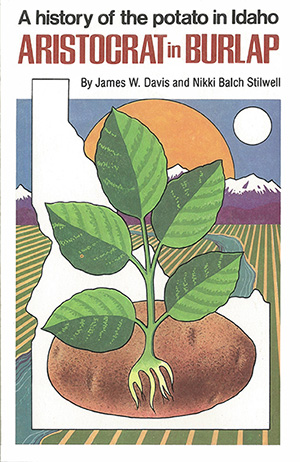One of the most significant developments in the Idaho potato industry in recent years has been the greatly increased acreage of farm land planted to potatoes. Although tracts of land have been reclaimed and added to Idaho's irrigated acreage in all parts of the Snake River watershed, by far the largest additions have come on the south side of the river down stream from Twin Falls. Most of this newly cultivated land has been brought into production by groups of individuals who have filed under the Desert Land Entry Act.
Formerly federal land held by the Bureau of Land Management, these thousands of acres of desert became eligible to be claimed when water for irrigation could be shown to be available. When the feasibility of irrigating these desert tracts was demonstrated, desert-entry claims were filed by the hundreds, creating a land rush that rivaled those of an earlier day in American history.
As is so often the case, the entire progression of events was triggered by a great idea whose time had come. The vision and the imagination of one man resulted in the development of half a dozen or more individual projects, the largest of which reclaimed more than 25,000 acres in one development.
It is true that desert entry filings accounted for the greatest portion of the reclamation activity-but, curiously enough, the initial project land did not come from that source. Shortly following World War I, the Boise-Kuna Land Development Project was completed under the Bureau of Reclamation. Included in that project was a tract south of Nampa known as the Dry Lake area. The name comes from an extremely flat basin with a surface composed of bentonite. During the wet season of the year, a few inches of water collects over the virtually impenetrable bentonite and creates a small temporary lake. Freezing to the bottom in the wintertime, the sheet of ice was a popular skating spot for Boise Valley youth in December and January of the most severe winters. In the spring, after the rainy season, the water quickly evaporated and it became, in fact, a dry lake.
After the development of the Boise-Kuna irrigation project, it was found that there were more acres involved than there was water available to irrigate. Because of its location and elevation, the Dry Lake area was not included in the early development and failed to get the irrigation water that had been promised.

